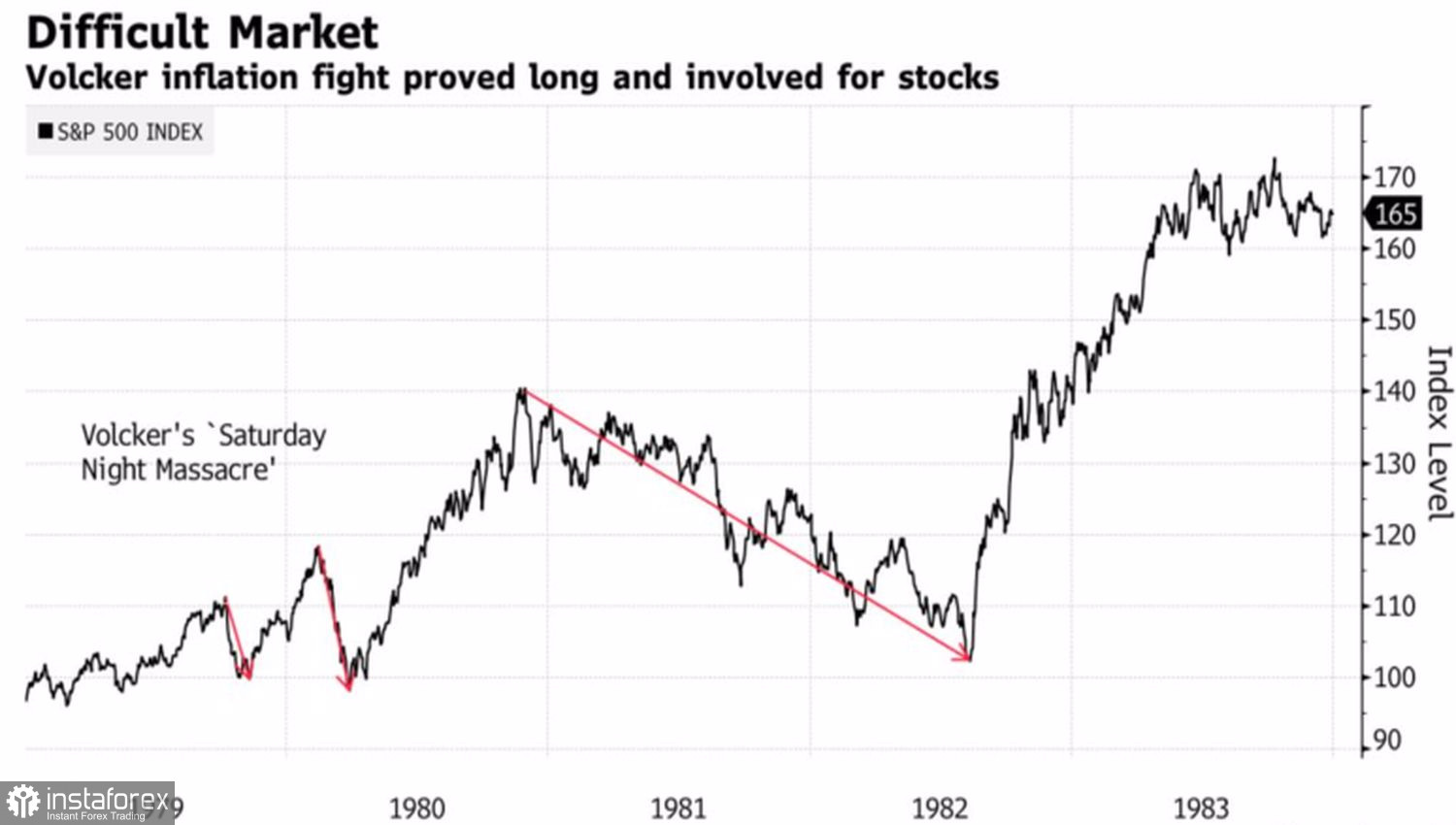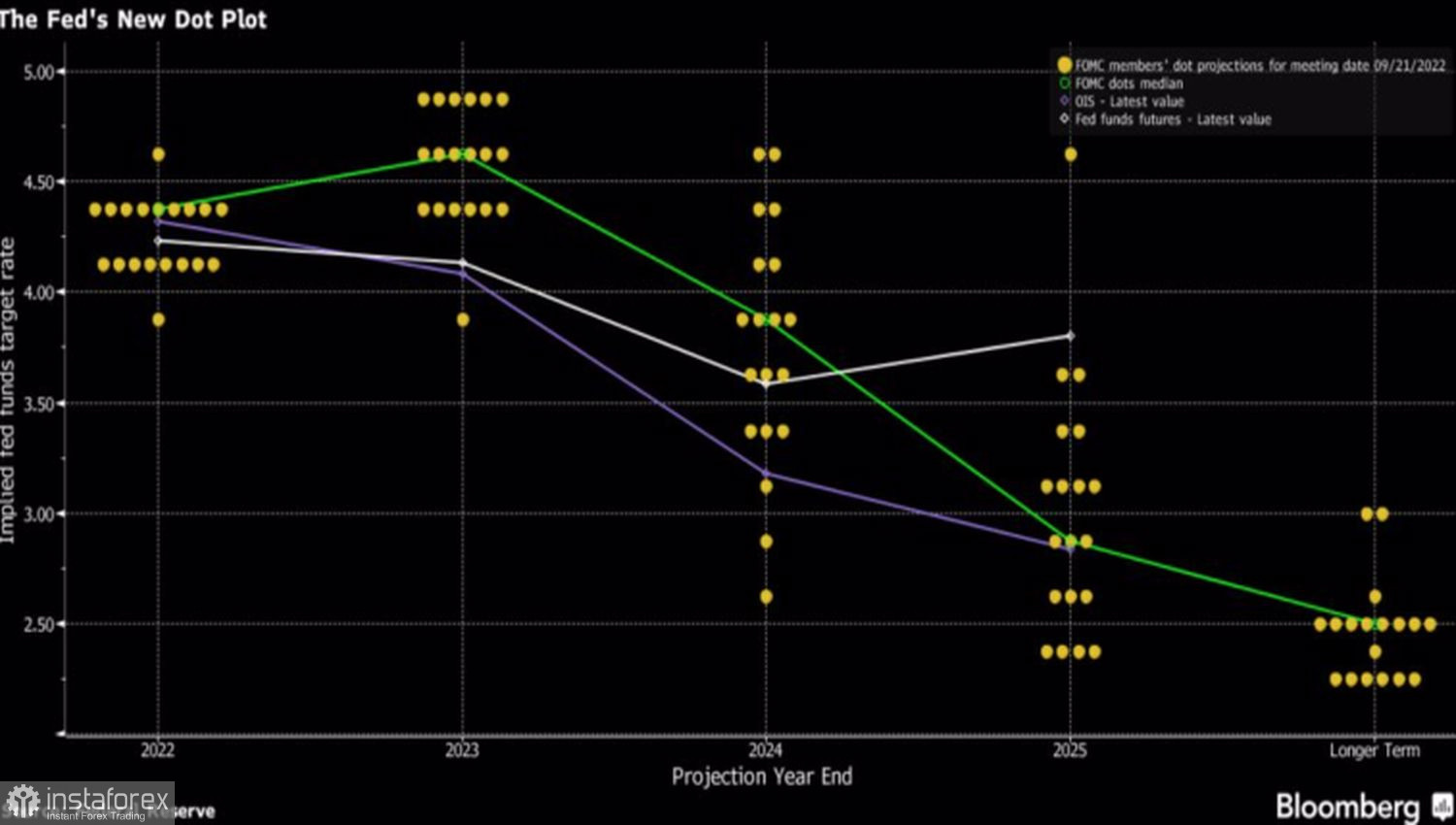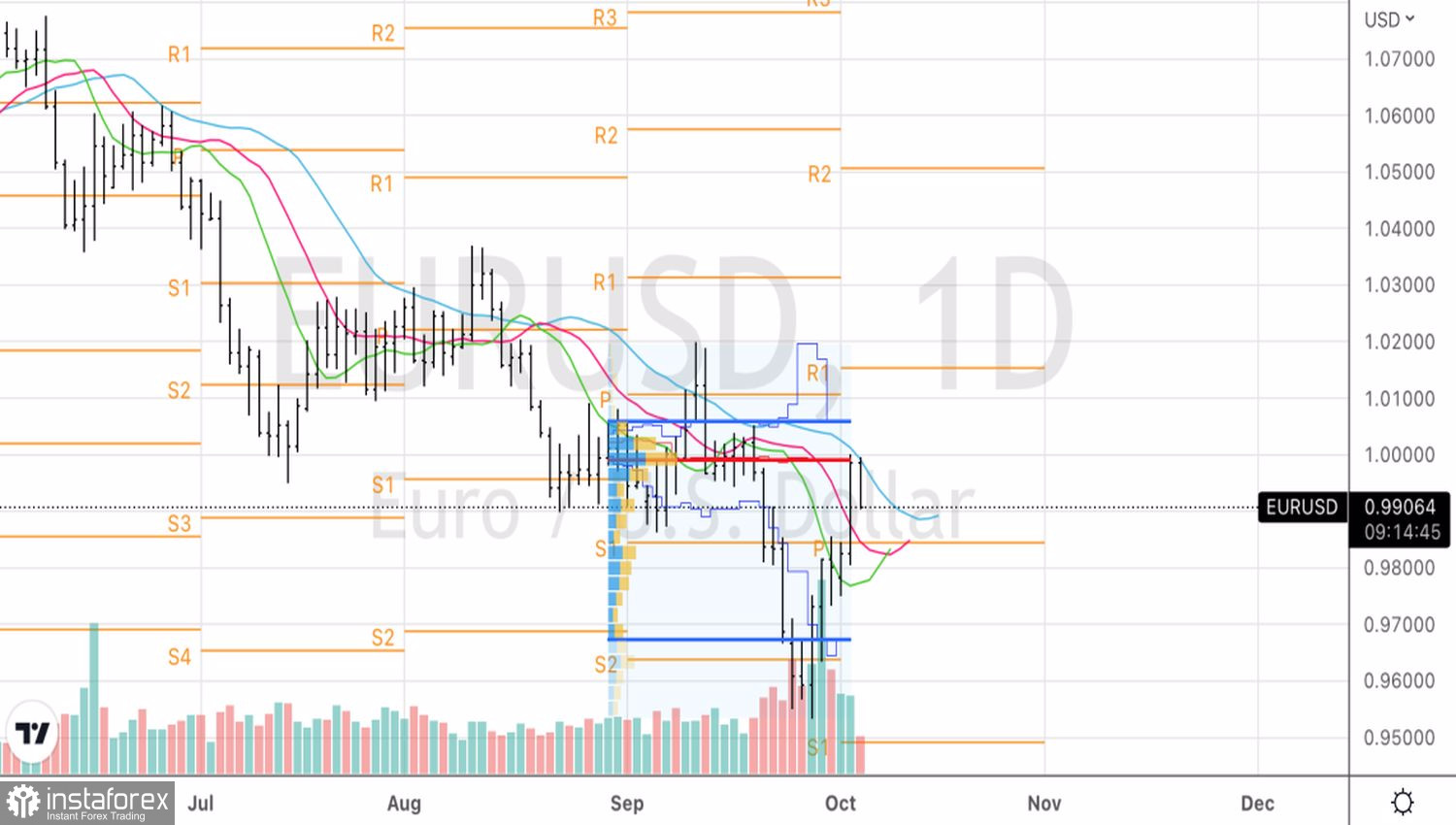If in August the attempts of buyers of US stocks to violate market laws and go against the Fed were stopped by Jerome Powell's incendiary speech, in September inflation statistics did it, then in October a shot in the air may be enough. In other words, warnings from large banks. From Barclays, for example, who said the Fed's dovish reversal needs more evidence. They could be a serious cooling of the labor market and a slowdown in consumer prices. So far, US stock indices have not come out of the woods. This means that EURUSD is too early to go up.
When US inflation is in the region of 40-year highs, the historical parallels with those years suggest themselves. Investors keep talking about the legendary Fed Chairman Paul Volcker, who led the US economy through two recessions but ended up breaking the back of high prices. When this man loosened the noose, that is, slowed down the process of monetary restriction, US stocks rose by 43% in 8 months. However, then came another recession and the subsidence of the S&P 500.
S&P 500 Reaction to Fed Monetary Policy

History repeats itself. Investors sincerely expect that as soon as the impact of monetary tightening on the US economy begins to show, the Fed will begin to slow down. I hasten to disappoint the "bulls" in stock indices and EURUSD: it is unlikely to do so.
The Central Bank, headed by Paul Volcker, did not have before his eyes an example of how to act in conditions of double-digit inflation. But Powell has such an example. The Fed is well aware of the dangers of a premature slowdown. That is why the majority of FOMC members unanimously argue that the work has not yet been done, that the federal funds rate has room to grow. They predict it will rise to 4.4% in 2022 and 4.6% in 2023. New team member Philip Jefferson notes that the regulator must remain determined to bring inflation back to the 2% target.
FOMC forecasts for the federal funds rate


In such a situation, the euro is not to be envied. In fact, the regional currency has no trump cards of its own. It is forced to go with the flow—to react to the weakness or strength of the US dollar. How can the "bulls" on EURUSD respond to their opponents? Stronger economic growth in the eurozone than the US? Unlikely. The currency bloc is closer to recession than the US due to the energy crisis. Higher ECB monetary restriction rate? No. It is the same, but the Fed's rate ceiling is higher. So the euro has to react to the dynamics of US stock indices or, in other words, to the global appetite for risk.
Technically, on the EURUSD daily chart, the pair's inability to storm fair value near parity speaks of bullish weakness. Formed on the rise to the level of 1 and on the return below 0.995, we hold short positions on the euro against the US dollar and periodically build up on pullbacks.
 English
English 
 Русский
Русский Bahasa Indonesia
Bahasa Indonesia Bahasa Malay
Bahasa Malay ไทย
ไทย Español
Español Deutsch
Deutsch Български
Български Français
Français Tiếng Việt
Tiếng Việt 中文
中文 বাংলা
বাংলা हिन्दी
हिन्दी Čeština
Čeština Українська
Українська Română
Română

